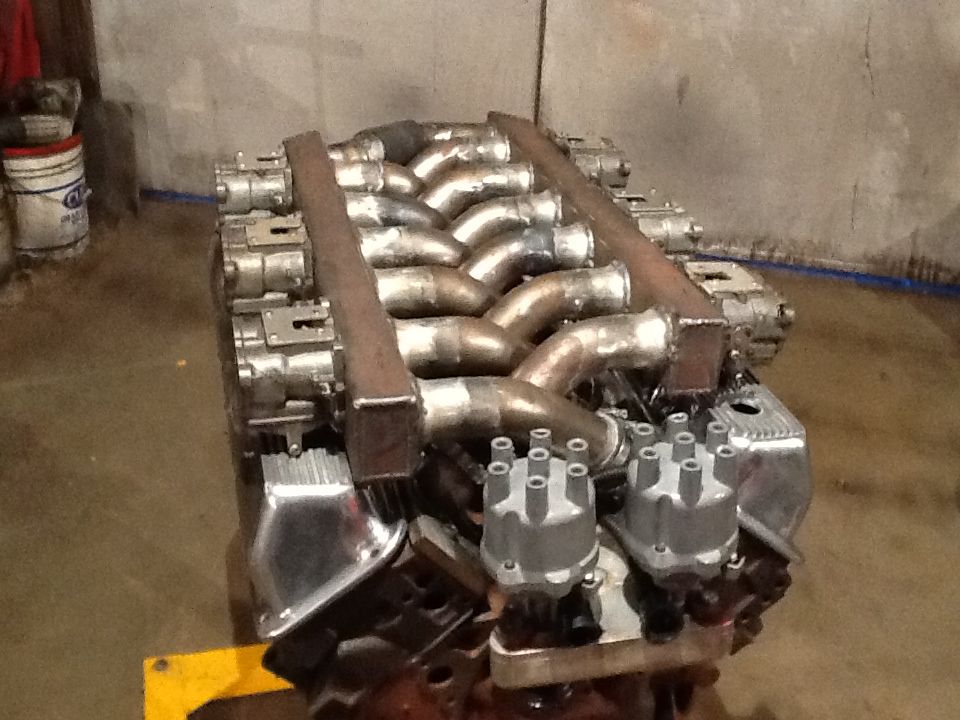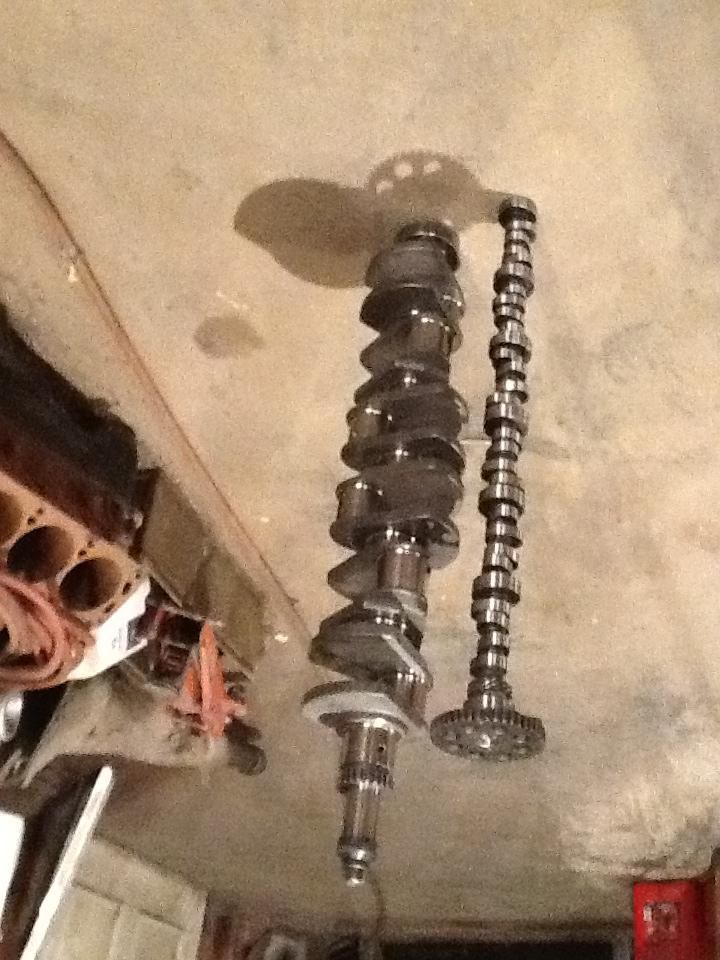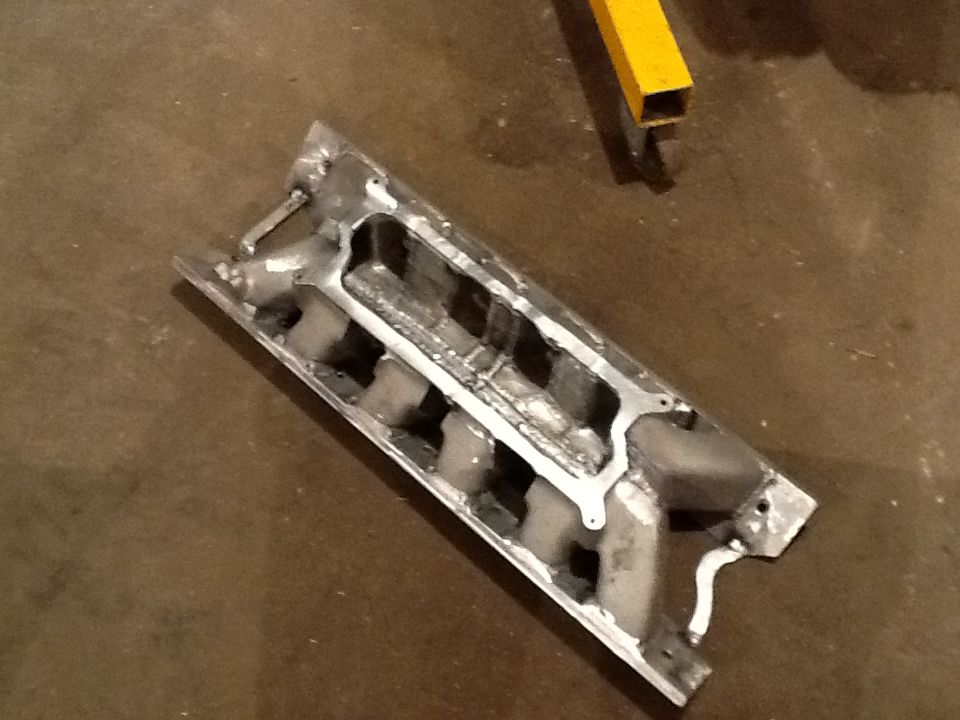The bores are at 4.090” (ultrasonic says still has 1/8 min. wall), 3.5” stroke 5.565” rod length. That’s 552 Cubic Inches from the 12 cylinders.
Cam (solid roller) is 306/316 advertised duration, 272/278 @ .050. with 0.685”/.690” lift. 112 LSA installed on a .106 intake centerline.
I believe he indicated the firing order is 153624 as in all Ford straight 6s. His crank just has two rods on each throw. Right bank viewed from rear is 1-6 and left bank left is 90 out from right.
Now I know such a project draws a lot of questions about how certain things are done and how durable it will be but Jan used to build straight six Fords that were campaigned on round-d-round tracks that turned 8-8.5krpm with….you guessed it, sectioned 4V Cleveland heads, so I suspect he knows a thing or two about how to do the task and make them live and last.
I was put in touch with Jan because of that inline Autolite carb sitting atop the running engine. He also has a cross ram intake shown in the pictures with 6 outboard marine carbs and an intake with removable top so he can run four barrels too.
When I asked Jan what the engine was destined for he said he’d like to build a J-Car around it but he really likes Panteras too, so....! Here are links to running video. There will be better video available in the not too distant future. Enjoy.



http://vid398.photobucket.com/...8MOV_zps4d163946.mp4
https://docs.google.com/file/d...g/edit?usp=drive_web
https://docs.google.com/file/d...U/edit?usp=drive_web
https://docs.google.com/file/d...E/edit?usp=drive_web
Best,
Kelly


